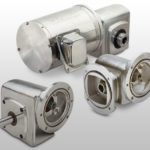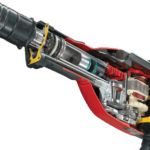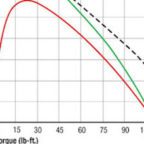Performance curves for gearmotors are central to selecting the correct gearmotor for a given application. They typically display three parameters; speed, torque, and efficiency. Essentially, they combine motor performance and gearbox performance into one graph.
Speed and torque information is normally found on a motor’s torque-speed curve, which provides information about the relationship between a motor’s speed and the torque output of the motor. A gearbox performance curve, on the other hand, shows how torque and efficiency are related.

For instance, this curve for a permanent magnet dc gearmotor from Groschopp shows the relationship between the three relevant parameters of torque, speed, and efficiency. From the curve we can see that for the gearmotor to operate at the maximum rated torque (about 3.75 lb-in.) the speed would be about 2,400 rpm with a corresponding efficiency of slightly more than 70%.
A gearmotor performance curve is only one tool to help in selecting the right product. To get the most out of it requires a thorough knowledge of the application. For instance, the load requirements and speed range can be used to calculate the required torque for the application. Then, the manufacturer’s gearmotor performance curve can be used to select the best gearmotor fit.






Leave a Reply
You must be logged in to post a comment.